Nucleic Acid Armor: Fortifying RNA Therapeutics through Delivery and Targeting Innovations for Immunotherapy
- PMID: 39201574
- PMCID: PMC11354913
- DOI: 10.3390/ijms25168888
Nucleic Acid Armor: Fortifying RNA Therapeutics through Delivery and Targeting Innovations for Immunotherapy
Abstract
RNA is a promising nucleic acid-based biomolecule for various treatments because of its high efficacy, low toxicity, and the tremendous availability of targeting sequences. Nevertheless, RNA shows instability and has a short half-life in physiological environments such as the bloodstream in the presence of RNAase. Therefore, developing reliable delivery strategies is important for targeting disease sites and maximizing the therapeutic effect of RNA drugs, particularly in the field of immunotherapy. In this mini-review, we highlight two major approaches: (1) delivery vehicles and (2) chemical modifications. Recent advances in delivery vehicles employ nanotechnologies such as lipid-based nanoparticles, viral vectors, and inorganic nanocarriers to precisely target specific cell types to facilitate RNA cellular entry. On the other hand, chemical modification utilizes the alteration of RNA structures via the addition of covalent bonds such as N-acetylgalactosamine or antibodies (antibody-oligonucleotide conjugates) to target specific receptors of cells. The pros and cons of these technologies are enlisted in this review. We aim to review nucleic acid drugs, their delivery systems, targeting strategies, and related chemical modifications. Finally, we express our perspective on the potential combination of RNA-based click chemistry with adoptive cell therapy (e.g., B cells or T cells) to address the issues of short duration and short half-life associated with antibody-oligonucleotide conjugate drugs.
Keywords: RNA drugs; antibody–oligonucleotide conjugates; immunotherapy; nanotechnology; nucleic acid delivery.
Conflict of interest statement
The authors declare that there are currently no known competing financial interests or personal relationships that would affect what is said herein.
Figures
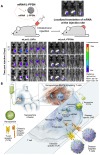
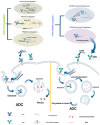
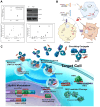

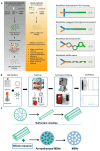

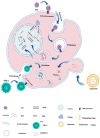
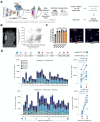
Similar articles
-
Emerging Delivery Systems for Enabling Precision Nucleic Acid Therapeutics.ACS Nano. 2025 Feb 4;19(4):4039-4083. doi: 10.1021/acsnano.4c11858. Epub 2025 Jan 21. ACS Nano. 2025. PMID: 39834294 Review.
-
Chemical modifications of nucleic acid drugs and their delivery systems for gene-based therapy.Med Res Rev. 2018 May;38(3):829-869. doi: 10.1002/med.21479. Epub 2018 Jan 5. Med Res Rev. 2018. PMID: 29315675 Review.
-
Peptides for nucleic acid delivery.Adv Drug Deliv Rev. 2016 Nov 15;106(Pt A):172-182. doi: 10.1016/j.addr.2016.06.008. Epub 2016 Jun 25. Adv Drug Deliv Rev. 2016. PMID: 27349594 Review.
-
Advances in modification and delivery of nucleic acid drugs.Zhejiang Da Xue Xue Bao Yi Xue Ban. 2023 Aug 25;52(4):417-428. doi: 10.3724/zdxbyxb-2023-0130. Zhejiang Da Xue Xue Bao Yi Xue Ban. 2023. PMID: 37643976 Free PMC article. Review. Chinese, English.
-
Development of bioconjugate-based delivery systems for nucleic acids.RNA. 2024 Dec 16;31(1):1-13. doi: 10.1261/rna.080273.124. RNA. 2024. PMID: 39477529 Free PMC article. Review.
Cited by
-
Using aptamers for targeted delivery of RNA therapies.Mol Ther. 2025 Apr 2;33(4):1344-1367. doi: 10.1016/j.ymthe.2025.02.047. Epub 2025 Mar 5. Mol Ther. 2025. PMID: 40045577 Free PMC article. Review.
-
Harnessing RNA therapeutics: novel approaches and emerging strategies for cardiovascular disease management.Front Cardiovasc Med. 2025 Mar 20;12:1546515. doi: 10.3389/fcvm.2025.1546515. eCollection 2025. Front Cardiovasc Med. 2025. PMID: 40182424 Free PMC article. Review.
-
LINC02679 regulates TRIML2 to promote gastric cancer proliferation and invasion via targeting miR-5004-3p.Noncoding RNA Res. 2025 Apr 1;13:1-14. doi: 10.1016/j.ncrna.2025.04.001. eCollection 2025 Aug. Noncoding RNA Res. 2025. PMID: 40276014 Free PMC article.
References
Publication types
MeSH terms
Substances
Grants and funding
- 862401013154/Start-up fundings from Ocean University of China
- 862401013155/Start-up fundings from Ocean University of China
- LMDBCXRC202401/Laboratory for Marine Drugs and Bioproducts, Qingdao Marine Science and Technology Center
- LMDBCXRC202402/Laboratory for Marine Drugs and Bioproducts, Qingdao Marine Science and Technology Center
- tsqn202306102/Taishan Scholar Youth Expert Program of Shandong Province
LinkOut - more resources
Full Text Sources
Miscellaneous

